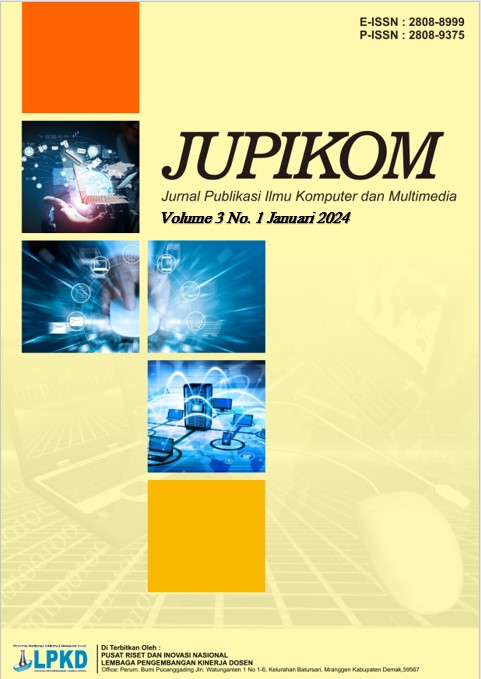Implementasi Algoritma Naive Bayes untuk Sistem Pendukung Keputusan Penerima Bantuan Pendidikan
DOI:
https://doi.org/10.55606/jupikom.v4i1.4276Abstract
Education plays a crucial role in shaping excellent human resources, which are the main foundation of national development. However, economic limitations remain a significant barrier for some students in accessing proper education. To address this issue, the government has implemented various educational assistance programs. SMKN 9 Bulukumba, as one of the vocational high schools, also faces challenges in selecting scholarship recipients efficiently, objectively, and transparently.
This study aims to develop a decision support system based on the Naive Bayes Classifier algorithm to assist the selection process of educational aid recipients. Naive Bayes is a simple yet effective probabilistic classification algorithm that performs well on small to medium-sized datasets. This research employs a data mining approach to build a classification model based on several attributes, such as type of residence, means of transportation, and parents’ income.
The results of testing on 10 student data samples showed that 6 students were classified as eligible for assistance, while 4 were not. The dominant factors determining eligibility were the low income of the father and the absence of income from the mother. Interestingly, all students using public transportation were not classified as aid recipients, indicating that transportation is not always a primary indicator of eligibility.
Keywords: Education, Data Mining, Naive Bayes, Classification
Downloads
Published
How to Cite
Issue
Section
License
Copyright (c) 2025 Jurnal Publikasi Ilmu Komputer dan Multimedia

This work is licensed under a Creative Commons Attribution-NonCommercial-ShareAlike 4.0 International License.








